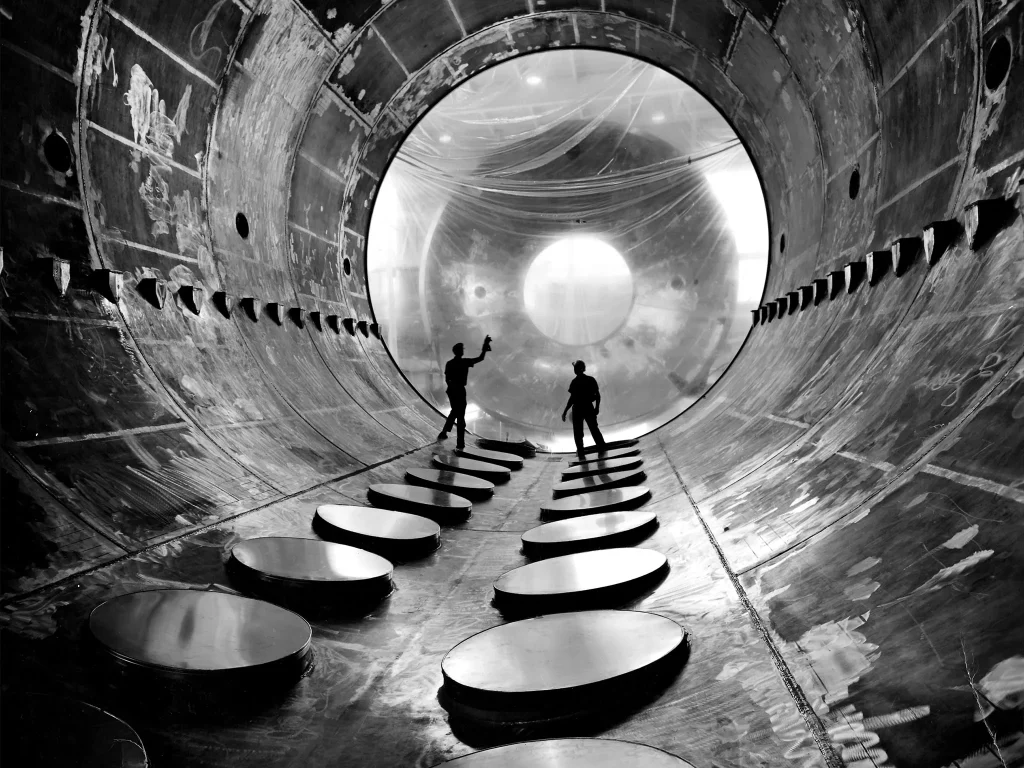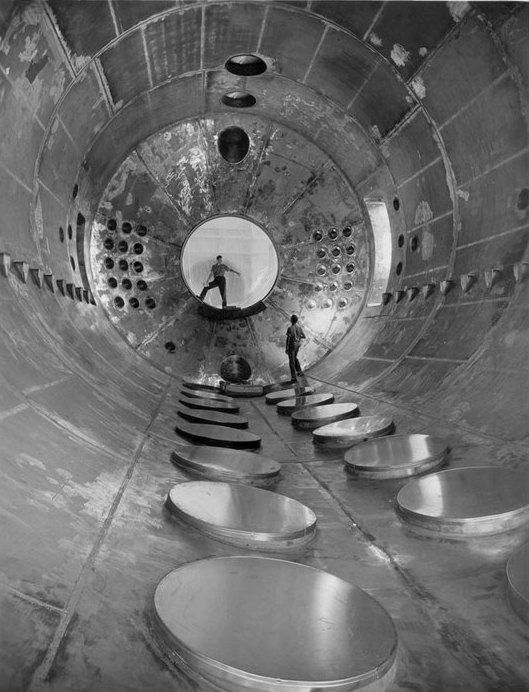Introduction
NASA’s Electric Propulsion Laboratory (EPL) plays a pivotal role in advancing space propulsion technologies, which are crucial for the exploration of our solar system and beyond. At the heart of the laboratory’s research and testing facilities is the vacuum tank, a sophisticated and essential component that supports a range of experiments and evaluations for electric propulsion systems. This article delves into the details of the vacuum tank, its design and purpose, the experiments conducted within, and its significance to space exploration.
The Electric Propulsion Laboratory: A Brief Overview
The Electric Propulsion Laboratory is a premier facility dedicated to developing and testing advanced propulsion technologies. Located at NASA’s Jet Propulsion Laboratory (JPL) in Pasadena, California, EPL is renowned for its cutting-edge research in electric propulsion systems, including ion thrusters and Hall-effect thrusters.
Electric propulsion technologies are crucial for missions that require efficient and precise control of spacecraft. These systems use electrical energy to accelerate propellant, generating thrust that can propel spacecraft with high efficiency over long distances. The EPL’s vacuum tank is instrumental in simulating the space environment to test these technologies.
The Vacuum Tank: Design and Purpose
The vacuum tank at NASA’s EPL is an engineering marvel designed to replicate the near-vacuum conditions of space. Here’s an in-depth look at its design, construction, and function:
1. Design Specifications
The vacuum tank is a large, cylindrical chamber constructed to create a vacuum environment that closely mimics the conditions of outer space. Key design features include:
- Size and Dimensions: The tank is substantial in size, often exceeding several meters in diameter and length. This scale allows for the testing of large-scale propulsion systems and other space-related technologies.
- Material Composition: Constructed from high-strength materials such as stainless steel or aluminum alloys, the tank is designed to withstand the stresses of creating and maintaining a vacuum. The materials are carefully chosen for their durability and resistance to contamination.
- Vacuum Pumps: The tank is equipped with high-capacity vacuum pumps that can evacuate air and other gases to create a low-pressure environment. These pumps are essential for achieving the near-vacuum conditions required for accurate testing.
2. Function and Operation
The primary function of the vacuum tank is to provide a controlled environment where electric propulsion systems can be tested under conditions similar to those in space. The tank’s operation involves:
- Creating a Vacuum: Once the test setup is in place, the vacuum pumps are activated to remove air and achieve the desired low-pressure conditions. The tank’s pressure is carefully monitored and controlled to simulate the space environment.
- Temperature Control: Space conditions also involve extreme temperatures. The vacuum tank is equipped with temperature control systems to simulate the thermal extremes of space, allowing for tests under various thermal conditions.
- Instrumentation and Data Collection: The tank is outfitted with a range of sensors and instrumentation to measure various parameters such as thrust, pressure, temperature, and emissions. This data is crucial for evaluating the performance of propulsion systems.
Experiments and Testing in the Vacuum Tank
The vacuum tank is a critical facility for conducting experiments and testing various propulsion technologies. Some key aspects of the testing process include:
1. Electric Propulsion Systems
The tank is used to test a range of electric propulsion systems, including:
- Ion Thrusters: These devices use electric fields to accelerate ions and generate thrust. Testing in the vacuum tank involves measuring thrust performance, efficiency, and stability under space-like conditions.
- Hall-Effect Thrusters: Similar to ion thrusters, Hall-effect thrusters use magnetic fields to accelerate ions. Tests in the vacuum tank focus on performance metrics such as specific impulse, thrust-to-power ratio, and lifetime.
- Plasma Propulsion Systems: The tank is also used for testing experimental plasma-based propulsion technologies, which have the potential to offer high efficiency and performance for future missions.
2. Spacecraft Components
In addition to propulsion systems, the vacuum tank is utilized for testing other spacecraft components, including:
- Thermal Control Systems: Spacecraft require effective thermal control systems to manage heat dissipation and protect sensitive components. Testing these systems in the vacuum tank ensures their performance under space conditions.
- Material and Structural Integrity: Components and materials used in spacecraft are tested for their durability and integrity in a vacuum environment. This includes evaluating resistance to outgassing, thermal stresses, and mechanical loads.
- Scientific Instruments: Instruments intended for space missions, such as telescopes and detectors, are tested for their functionality and performance in the vacuum tank. This ensures they will operate correctly once deployed in space.
3. Calibration and Validation
The vacuum tank also serves as a platform for calibrating and validating various experimental setups and measurement systems. Ensuring accurate and reliable data is essential for the success of space missions and the development of new technologies.
Significance to Space Exploration
The vacuum tank’s contributions to space exploration are profound and multifaceted:
1. Advancing Propulsion Technology
By providing a realistic testing environment, the vacuum tank helps advance electric propulsion technologies, which are crucial for deep space missions and interplanetary travel. Improved propulsion systems enable spacecraft to achieve higher speeds, better maneuverability, and greater mission efficiency.
2. Supporting Mission Success
Testing and validation of spacecraft components in the vacuum tank help ensure mission success by identifying and addressing potential issues before launch. This rigorous testing process reduces the risk of failure and enhances the reliability of space missions.
3. Enhancing Scientific Understanding
The data collected from experiments in the vacuum tank contributes to a deeper understanding of space environments and the behavior of spacecraft systems. This knowledge informs the design of future missions and technologies, expanding our capabilities for exploration and discovery.
4. Facilitating Innovative Research
The vacuum tank supports innovative research in various fields, including plasma physics, materials science, and spacecraft engineering. This research drives the development of new technologies and solutions for the challenges of space exploration.

Future Directions and Developments
Looking ahead, several advancements and developments are expected to enhance the capabilities of the vacuum tank and the research conducted at the Electric Propulsion Laboratory:
1. Upgraded Facilities
Ongoing upgrades to the vacuum tank and associated systems will improve its capabilities and performance. This includes advancements in vacuum pump technology, improved temperature control systems, and enhanced instrumentation.
2. Integration with Other Testing Facilities
Collaboration with other testing facilities and research centers will enable more comprehensive testing and validation of propulsion systems and spacecraft components. This integrated approach will enhance the accuracy and scope of experiments.
3. Expanded Research Opportunities
The continued exploration of new propulsion technologies, including those based on emerging scientific principles, will drive research in the vacuum tank. This includes the investigation of novel propulsion concepts and advanced materials for space applications.
4. Collaboration with International Partners
International collaboration will play a key role in advancing space propulsion research. Joint efforts with international space agencies and research institutions will facilitate the exchange of knowledge and expertise, contributing to the global advancement of space exploration technologies.
Conclusion
The vacuum tank at NASA’s Electric Propulsion Laboratory is a cornerstone of space propulsion research and development. Its sophisticated design and operational capabilities enable the testing of advanced propulsion systems and spacecraft components under conditions that closely mimic those of space. Through its contributions to technology advancement, mission success, and scientific understanding, the vacuum tank plays a vital role in shaping the future of space exploration.
As technology continues to evolve and new challenges arise, the vacuum tank will remain a critical asset for advancing our capabilities and expanding our knowledge of the cosmos. With ongoing improvements and innovations, it will continue to support the development of cutting-edge technologies that drive humanity’s exploration of the universe.


















































Discussion about this post